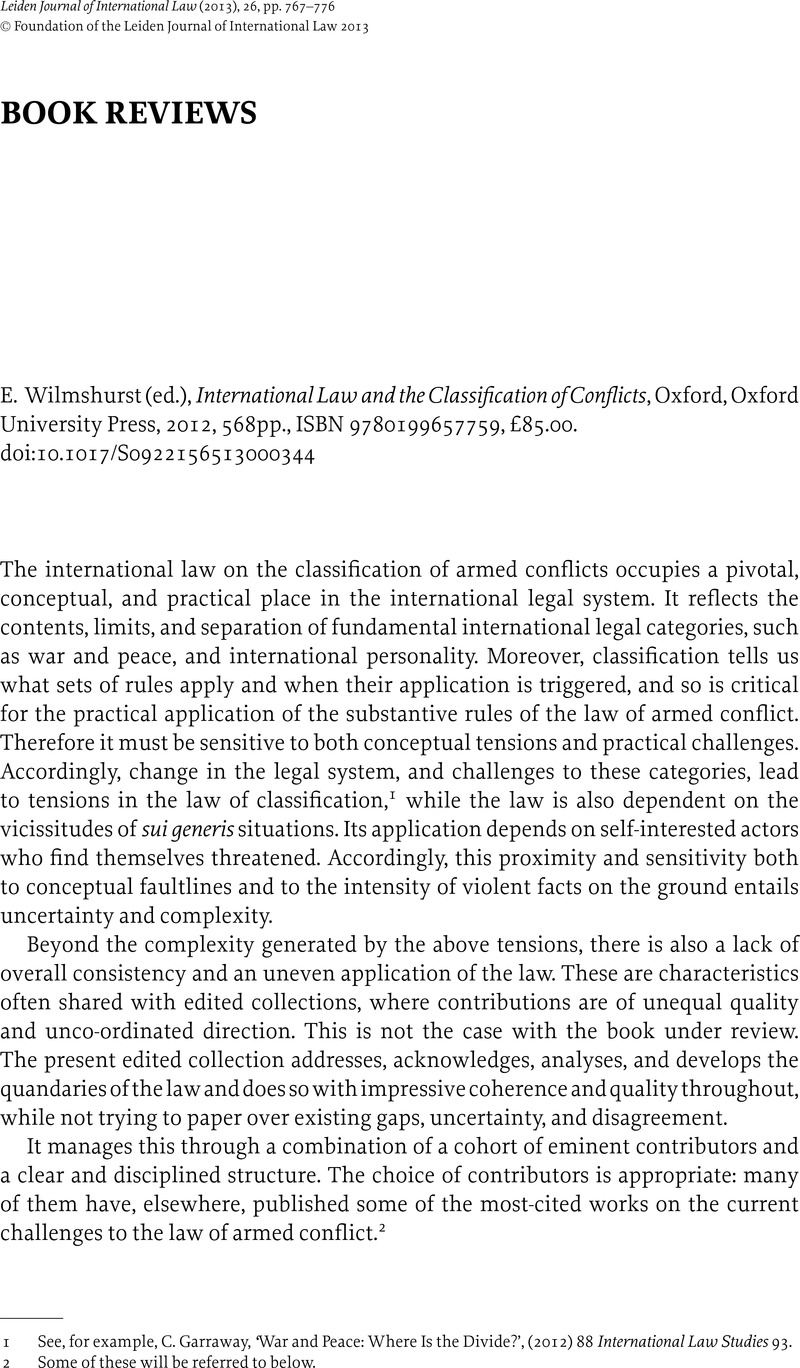No CrossRef data available.
Published online by Cambridge University Press: 31 July 2013

1 See, for example, Garraway, C., ‘War and Peace: Where Is the Divide?’, (2012) 88 International Law Studies 93Google Scholar.
2 Some of these will be referred to below.
3 Roberts, A., ‘Land Warfare: From Hague to Nuremberg’, in Howard, M.et al., The Laws of War: Constraints on Warfare in the Western World (1994), 117Google Scholar.
4 See Chapter 13 (The War(?) against Al-Qaeda), as well as Chapter 15 (Conclusions), making the general point.
5 An important example being the ‘Memorandum for the President; Subject: Decision re Application of the Geneva Convention on Prisoners of War to the Conflict with al Qaeda and the Taliban’, 25 January 2002, by Alberto Gonzales, Counsel to the US President.
6 One of the contributors has, elsewhere, used insights from the discipline of geography. See Arimatsu, L., ‘Territory, Boundaries and the Law of Armed Conflict’, (2009) 12 Yearbook of International Humanitarian Law 157CrossRefGoogle Scholar.
7 At 73, emphasis on the original, although it should be noted that the term ‘territorial’ plays an equally emphatic role in this sentence.
8 See, e.g., Arimatsu at 162 and Lubell at 433. These authors have developed this analysis elsewhere. See Arimatsu, supra note 6; and N. Lubell, Extraterritorial Use of Force against Non-State Actors (2010).
9 As set out in Ministry of Defence (Development, Concepts and Doctrine Centre), ‘Global Strategic Trends – Out to 2040’ (2010).
10 An area in which the author of the chapter is an eminent authority. See especially M. Schmitt (general editor), Tallinn Manual on the International Law applicable to Cyber Warfare (2013).